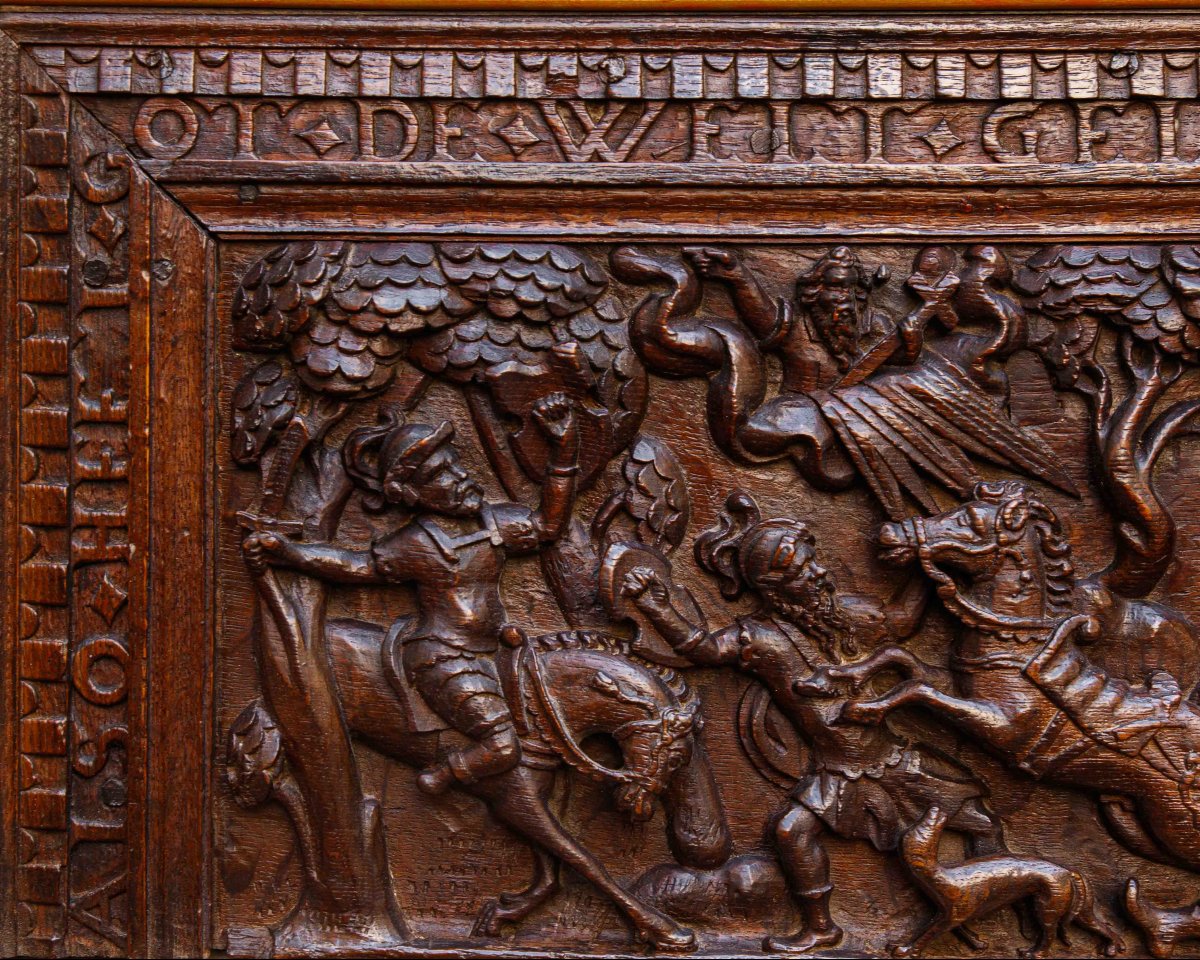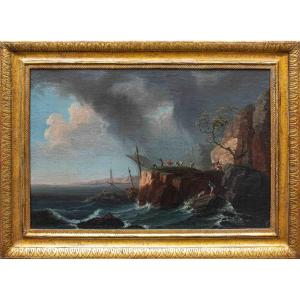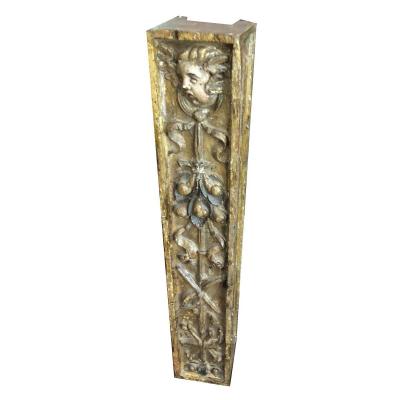The Battle of Lechfeld
Boxwood, cm 32 x 67
Frame, cm 44 x 78
Along the inscription profile "ALSO HEFT GOTT DE WETT GELEVET DAT BESINEN"
Using the term bas-relief refers to a sculptural technique that involves the carving of the surface of a square block in stone or wood. The word is intended to indicate, specifically, the raised contrast, in which the portrayed image is detected, less than its half, above the background plane. The bas-relief is used, already before the third millennium BC, in Egypt and Mesopotamia. The oldest Egyptian specimens date from the beginning of the dynastic period: the so-called "beauty palettes". Although, as just noted, the technique has very ancient origins, it is necessary to refer to its fortune even between the Renaissance and the Baroque period, as is evident with regard to the works of Ghiberti, Donatello, Vasari, Cellini and Giambologna.
This bas-relief in precious boxwood depicts a battle scene, probably identifiable with the Battle of Lechfeld (10 August 955), which marked the end of the raids of the Magyars - or Hungarians - in central Europe. In this battle, Emperor Otto I finally defeated the Magyar military commander, the harka Bulcsú, and his lieutenants Lehel and Súr, putting an end to the Hungarian incursions that terrorized the whole of Western Europe: following the disastrous outcome of the conflict, the Magyars retreated to Hungary and their king converted, taking the name of Stephen I and ceasing to be a danger to Christianity.


















































 Le Magazine de PROANTIC
Le Magazine de PROANTIC TRÉSORS Magazine
TRÉSORS Magazine Rivista Artiquariato
Rivista Artiquariato